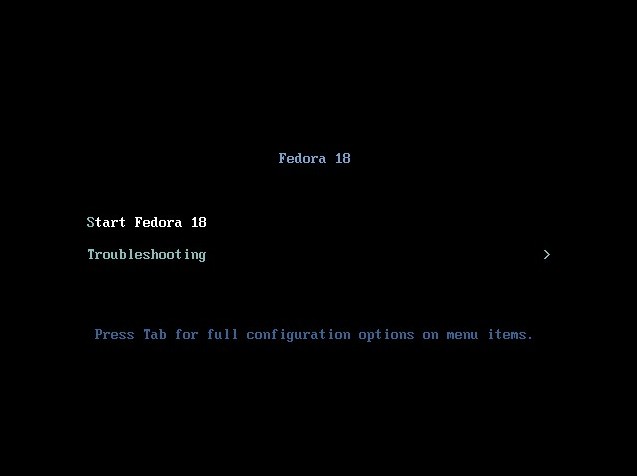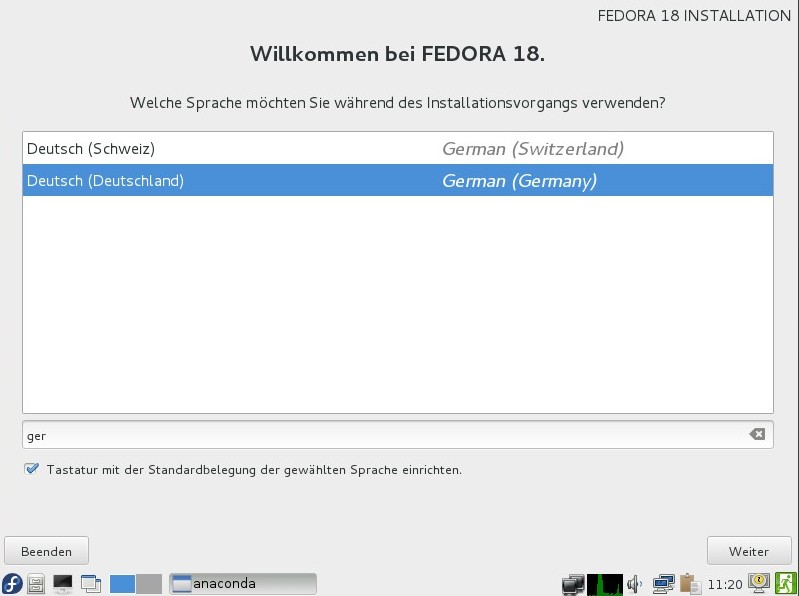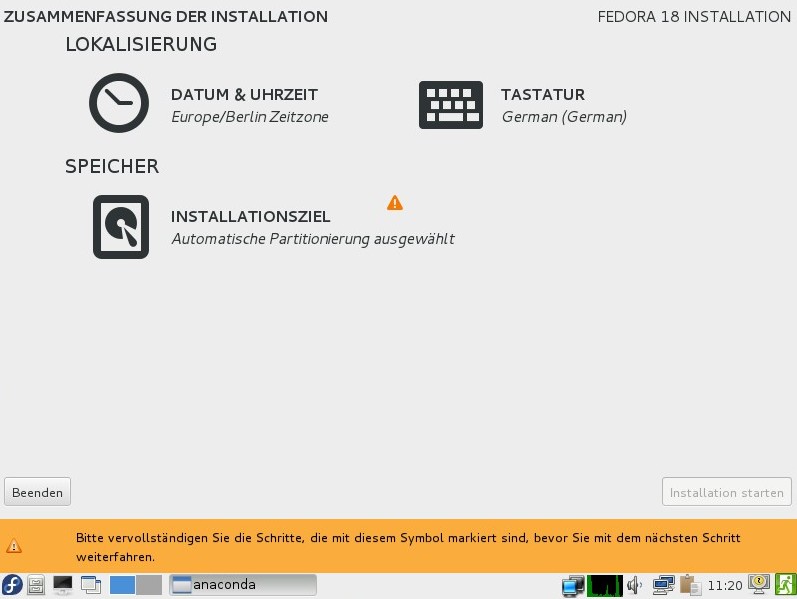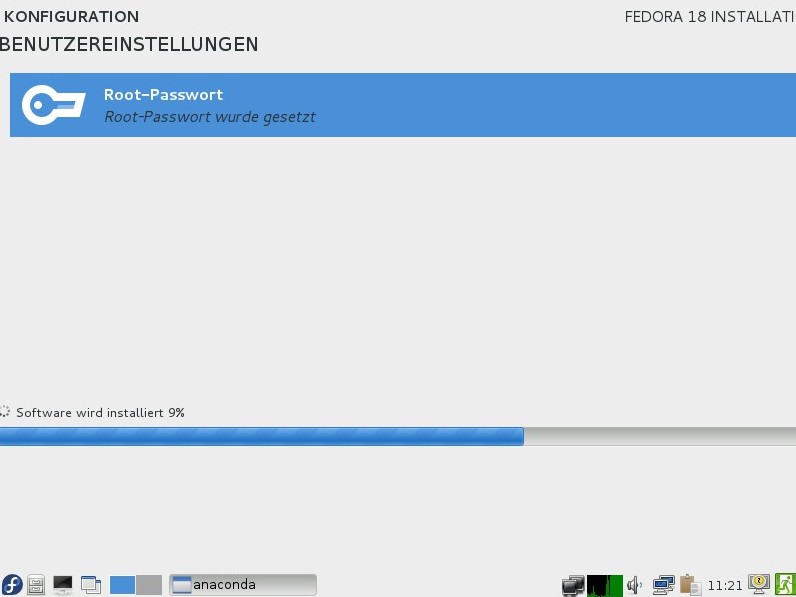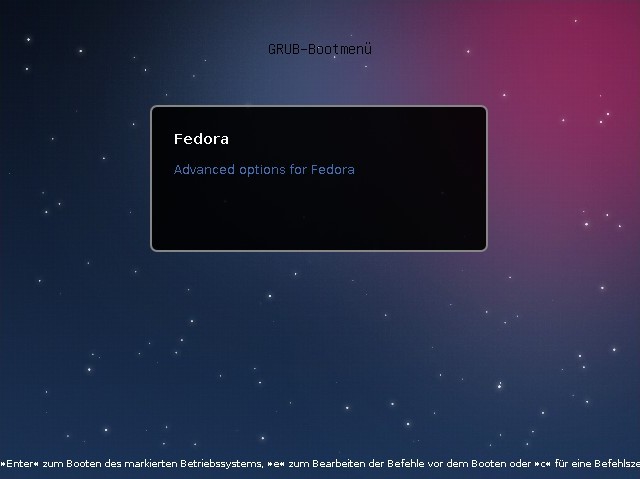First glance at Fedora 18
After the original release date and 6 other dates were canceled, Fedora 18 was released today.
Time to have a look at the anticipated operating system. The latest version of the RedHat supported project introductes some new features which might be also included in the upcoming version of Red Hat Enterprise Linux and accordingly Red Hat Enterprise Desktop.
Anaconda facelifting
The most eye-catching update is the Anaconda installer which welcomes user with a completely new look. The hitherto installer design was introduced at the time of Red Hat Linux (no I'm not referring to Red Hat Enterprise Linux!).
The new installer looks very clean - even unexperienced users are able to install a Linux system. However there is still place for customization like advanced disk layouts. I'm real excited how the installer is going to look like under RHEL or RHED - I found no deeper software selection possibilites in the LXDE spin so far (like before).
It only takes a few clicks until the installation programm starts - after a couple of minutes the system is installed and ready.
Updated desktops

Fedora 18 offers a couple of graphical user interfaces including:
- GNOME 3.6
- KDE SC 4.9
- Mate
- XFCE 4.10
- LXDE 0.5
I'm not that interested in these changes because I don't use Linux on desktop machines anymore - only on a little amount virtual machines I'm using a XFCE or LXDE desktop.
New firewall and open directory services
As a RHEL administrator I'm more interested in the changes "under the hood" because they might also find their place in the next RHEL release 7.0 which is planned for 2013.
By default Fedora uses a new firewall software called firewalld. This software classifies the whole network traffic in dedicated appropriate privileged network zones (drop, block, public, external, dmz, work, home, internal und trusted). Beside this the modular design is a big change - using this it is possible to apply rule changes without cutting active connections. Unfortunately IPTables doesn't support this - beyond that kernel modules are removed and inserted while the firewall is restarted.
The latest version of Samba 4 which was released recently also found its place in Fedora 18.
Package management using DNF
The new and optional package manager dnf is also an interesting enhancement of Fedora 18. This tool is a fork of YUM and is going to be a long-term replacement for it. The fork was caused by multiple reasons including:
- better dependency resolution using
hawkey(backend) andlibsolv(which arises from the OpenSuSE project) - higher performance using RPM 4.10
- lower memory consumption
DNF offers a command-line interface which reminds on YUM - the most well-known YUM commands still work under DNF.
Indeed dnf produced fewer CPU load on my Fedora machine - but the differences were marginal. I can report the same about the memory usage which was also minimally fewer like top and sar reported.
Of course there is a wide range of optimization - currently DNF is not significantly faster than YUM. But like the manpages says:
1DNF is an experimental replacement for Yum, a package manager for RPM Linux distributions.
I'm really excited in the further development progress of DNF.
Other changes
Fedora 18 comes with Linux version 3.6.10 - there is an 3.7.2 update available using the official repositories.
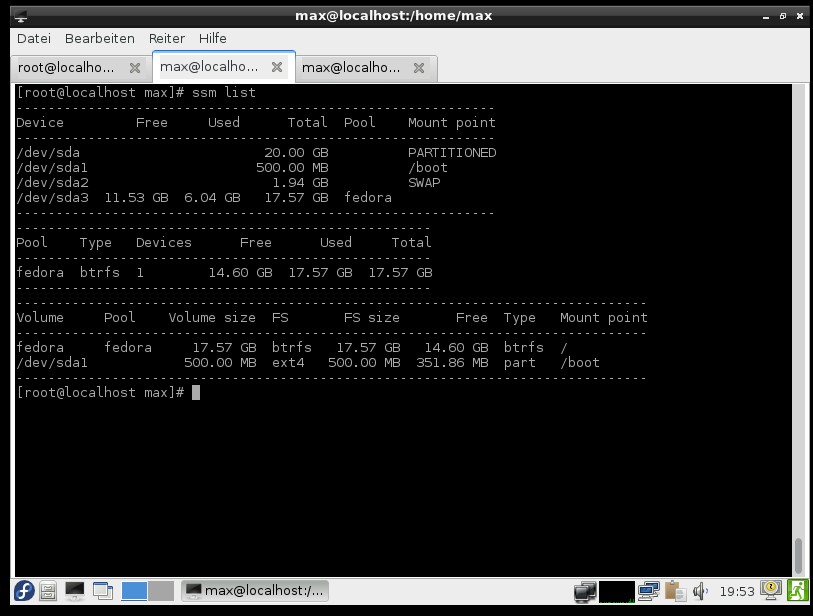
Also new is the System Storage Manager (ssm) which aims to simplify the management of storage devices. In this connection it is irrelevant whether LVM, software RAIDs using mdadm or btrfs are used. I'm looking forward to use this feature in the next RHEL release.
The full support of the disputable UEFI secure boot technology is mentionable. To implement this a bootloader had to be signed by Microsoft.
Conclusion
With Fedora 18 the first stone for Red Hat Enterprise Linux 7.0, which was anounced for this year, was laid - you can already see what technical updates might be introduced in the enterprise operating system.
Thanks to using systemd the operating system from North Carolina will not only reduce boot times but also making administration easier than before. It remains to be seen how btrfs, which is often named as answer on ZFS, will be implemented.
The first public RHEL7 beta was announced for the first half of 2013.
The anticipated Fedora 18 was released significantly later than expected - but it comes with a lot of new features that aren't included in almost all other Linux distributions. As an example I'd like to mention the complete support of UEFI - that's a exclusive feature of Fedora 18.
Screenshots
Attached some screenshots of Fedora 18 LXDE:
